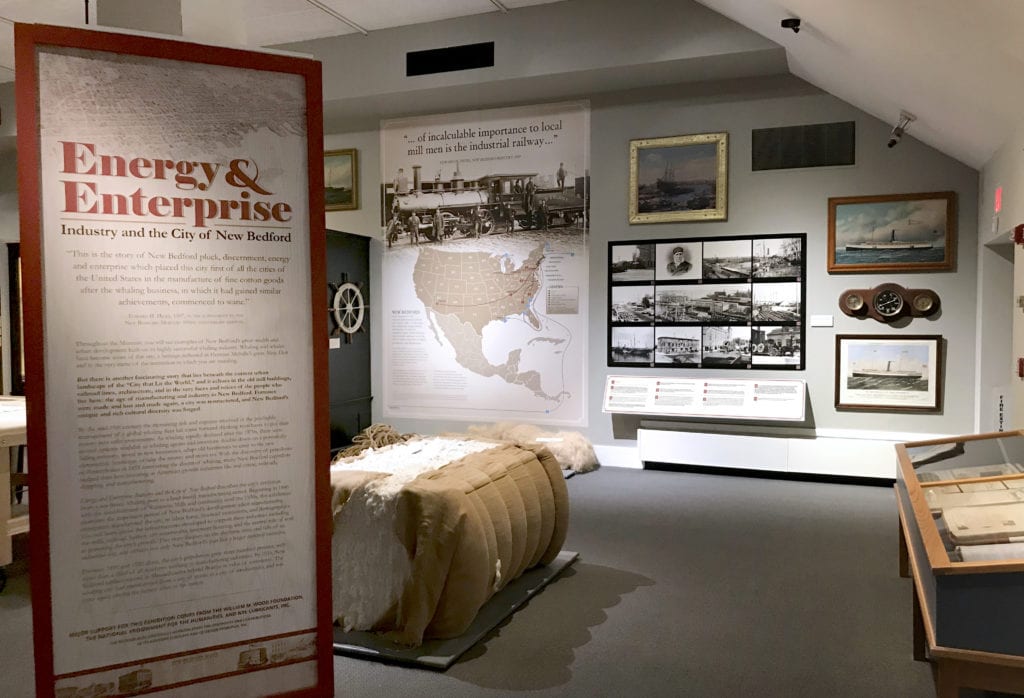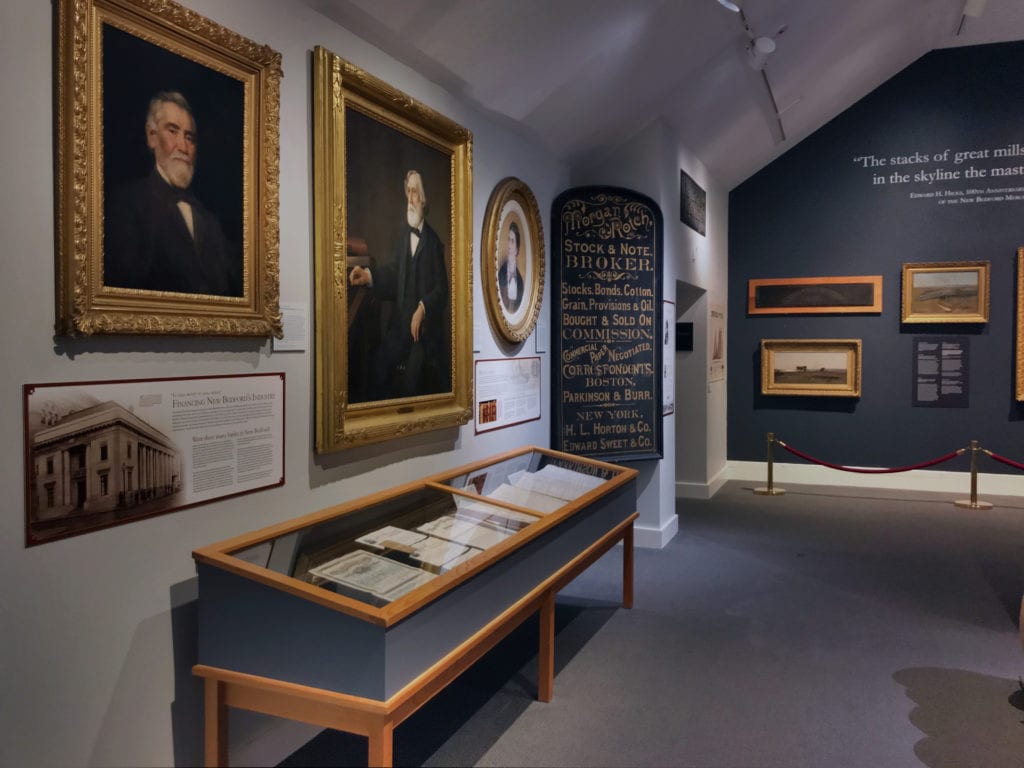New Bedford Whaling Museum
Energy & Enterprise: an immersive exhibition
An interactive exhibit invites visitors to experience “the fascinating stories echoed in old mill buildings, railroad lines, architecture, and in the very faces and voices of the people who lived and worked during the age of manufacturing and industry in New Bedford, Massachusetts.”
“Shhh!” & “Don't touch that!”
are not repeated refrains in this exhibit space
Modern exhibit design moves away from the days of stodgy spaces where “hands-off” everything was the norm. While exhibits still include many priceless and fragile historic artifacts that cannot be touched, nowadays forward-thinking museums are stepping up their game and inviting visitors “in” to experience a space (and a place in time) with all of their senses: to touch, smell, research, and view objects up close and personal.
New Bedford Whaling Museum's curator, Christina Connett, had a vision...and Design Principles was part of it. She wanted our team to help bring to life a series of unforgettable stories that “echoed in old mill buildings, railroad lines, architecture, and in the very faces and voices of the people who lived and worked during the age of manufacturing and industry in New Bedford, Massachusetts.” We were honored to help bring their voices back to life.
An interactive exhibit
welcomes your participation
This is no ordinary white-walled exhibit with wee-little labels that you need to lean in to read. Here you will a find floor-to-ceiling gear we painted in a bucket lift, an industrial-inspired map table we designed, along with wood signs, a scaled factory façade, and so much more.

North Wall, featuring a life-sized steam engine gear that we hand-painted with the museum curator, Christina Connet, using a bucket lift.
The Mill Facade, featuring a four-foot diameter clock face from Wamsutta Mill, draws guests into the mill to punch time cards like workers did years ago.
Stop at the Map Table to rest and research street maps reproduced from the City's archive.
Large physical objects like this full-size cotton bale provide visitors with tangible examples of the worker's labors and provide a sense of scale.
Interior Mill: The mills were highly mechanized and workers were expected to keep pace and meet weekly quotas of production.
The planning process
Armed with a list of 150+ artifacts and the directive to “bring the narrative to life” we got down to doing what we do...partnering and visioning. Our collaborative process is very much the same for exhibit design as it is for branding or web development. We don't usurp our clients' teams, we become “one” with them.
Our collaborative Creative Process includes creating and sharing vision boards, brainstorming ideas, mocking up individual areas to scale, incorporating feedback, even test-printing signage on our large format printer to get a sense of size and proportion.
Despite tight timelines and pressing deadlines, the work is wildly creative and wonderfully rewarding. It's sheer fun. It helps that the team at the New Bedford Whaling Museum is brilliant and equally passionate about what they do.



The sum of its parts
Bringing it all together
The new design worked in harmony with existing fixtures at the museum, many of which were repurposed and reimagined—such as display cases and large, free-standing items—to create an interactive experience.


Touring the exhibition
Our goal was to create an immersive experience...
To hear the work bell; to punch the clock and walk into the factory below an original Wamsutta Mill clock face; to physically compare our own diminutive size to the soaring height of a steam engine gear; to turn the pages of a book of maps and locate where our grandparents lived; is to engage our cognitive abilities so we more fully comprehend the fascinating stories being shared.
See how it all came together. Use the filter links below to view the different sections of the exhibit.


























